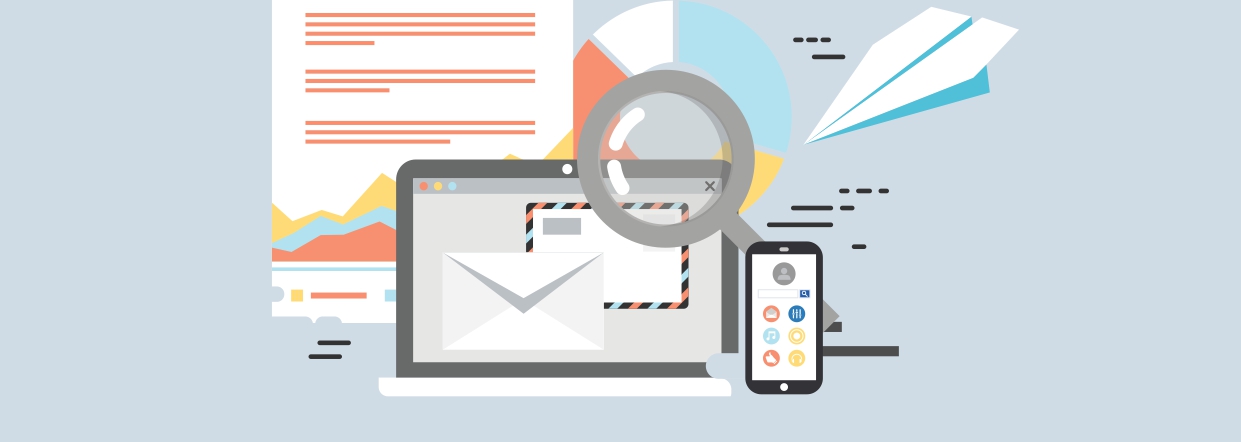The retail ecosystem is an agile and ever-changing one where it follows the fickle-minded customer. A customer who is easily distracted by the trends and wants to live in the moment, desiring instant gratification.
While consumers today increasingly want to minimize the time taken in making purchase decisions, the retailers at the same time want to minimize the cost spent on supply-chain, logistics, and operations. Digital transformation helps to sustain retail businesses and adapt to this change by making collaborations between internal teams and the customers possible.
As a result we have teams that are making use of cloud solutions to be connected at all times. They share data between themselves, allowing the teams to analyze and react in real-time. Reports start becoming more relevant and precise.
Ability to collaborate with the customer also has never been so easy. The customers can now have a seamless and omni-channel experience, allowing them to always stay engaged with the brand. Similarly, brands can follow the behavioral changes that their customers are going through and adapt accordingly.
Retail Ecosystem - Leveraging the Power of Process Automation
 As digital transformation in retail disrupts the industry, it is also providing a level playing field for all by creating ecosystems. Retail ecosystems redefine consumer expectations and reshape retail value chains. An ecosystem is the art of clubbing various consumer services in a single platform or app. It can offer varied services such as e-commerce, chat, streaming, gaming, booking services, or payments, and has the potential to attract a huge customer base. This, in turn, becomes an attractive database for retailers to analyze critical consumer data in a competitive market.
As digital transformation in retail disrupts the industry, it is also providing a level playing field for all by creating ecosystems. Retail ecosystems redefine consumer expectations and reshape retail value chains. An ecosystem is the art of clubbing various consumer services in a single platform or app. It can offer varied services such as e-commerce, chat, streaming, gaming, booking services, or payments, and has the potential to attract a huge customer base. This, in turn, becomes an attractive database for retailers to analyze critical consumer data in a competitive market.
However, the success of the ecosystem is not merely its catalogue of services and the efficiencies of scale that it offers. An ecosystem needs to appropriately leverage the power of automation. RPA in retail sector, as part of an ecosystem gives the retailers access to customer data analytics, extensive logistics networks and cloud services. It provides the capacity to launch new services and in new geographies.
Sales Automation
Multiple studies done with CPG companies have shown that almost 1/3rd of the sales processes can be automated. Most of the tasks performed by a sales executive are repetitive and can be freed up to meet with clients and market products. An efficient ecosystem can automate some of the processes like auto-assign visits based on priority, assign/re-assign optimized routes based on real-time traffic feedback, cancel visits to locations where orders can be auto-fulfilled, etc. This leads to focused visits and better outcomes.
Similarly, advanced devices integrated with the ecosystem can capture and process images using artificial intelligence and minimize the need for retail and CPG sales executives to manually walk the aisles checking for brand trade promotion compliances. Furthermore, these can be done remotely, thereby freeing up the executive to discuss products and potential new clients.
Marketing Automation
 The amount of data generated by the sales team is huge and is almost impossible to be analyzed and curated manually. This data processing and analysis when done in real-time allows marketing teams to personalize and curate campaigns that resonate with the mood of the customer. Automated analyses also provide a view on the efficacy of the marketing campaigns by using historical trends and capturing the pulse from the social channels in real-time.
The amount of data generated by the sales team is huge and is almost impossible to be analyzed and curated manually. This data processing and analysis when done in real-time allows marketing teams to personalize and curate campaigns that resonate with the mood of the customer. Automated analyses also provide a view on the efficacy of the marketing campaigns by using historical trends and capturing the pulse from the social channels in real-time.
Forecasting Automation
An extremely critical activity for manufacturers is their ability to forecast the demand to plan their production lines. The effectiveness depends on their ability to rightly categorize their products and consequently order, pre-order the parts/ products with their vendors. This is an area where automation is key and can help achieve very high accuracy when backed by a robust retail ecosystem.
Back Office Automation
Some of the easiest and quickest areas of automation which many retailers have already adopted are the back-office operations. Retail ecosystems that have effectively integrated robotic process automation can have streamlined processes for a variety of tasks. Managing orders from different sources and processing their invoices with accuracy and speed is one example. Similarly, exception handling in cases of errors, notifying vendors and reprocessing their orders can also be handled by process automation.
Contact Center Automation
Many digitally mature retailers have introduced automation in customer engagement while ensuring the human touch. Most of the interactions at the contact center are repetitive and can be handled by a bot powered by artificial intelligence. They are now adept to process text or audio as you write and speak and provide resolutions. This has greatly improved the speed at which queries are resolved, and if there are subsequent tasks to be performed, they are getting automatically assigned to the right teams. The contact centers are now becoming more efficient at processing and analyzing data they receive and can focus on understanding their customers better.
Before retailers invest in digital transformation or put together retail ecosystems, they will do well to engage digital transformation advisory services that they can trust. Such an advisory service will help them implement a digital strategy that encompasses the entire organization and not just a point-in-time initiative.
CONCLUSION
Change is the only constant and is at the core of retailers’ success strategy. A cultural shift is required for retailers to embrace agility and be in relentless pursuit to serve unmet customer needs.


